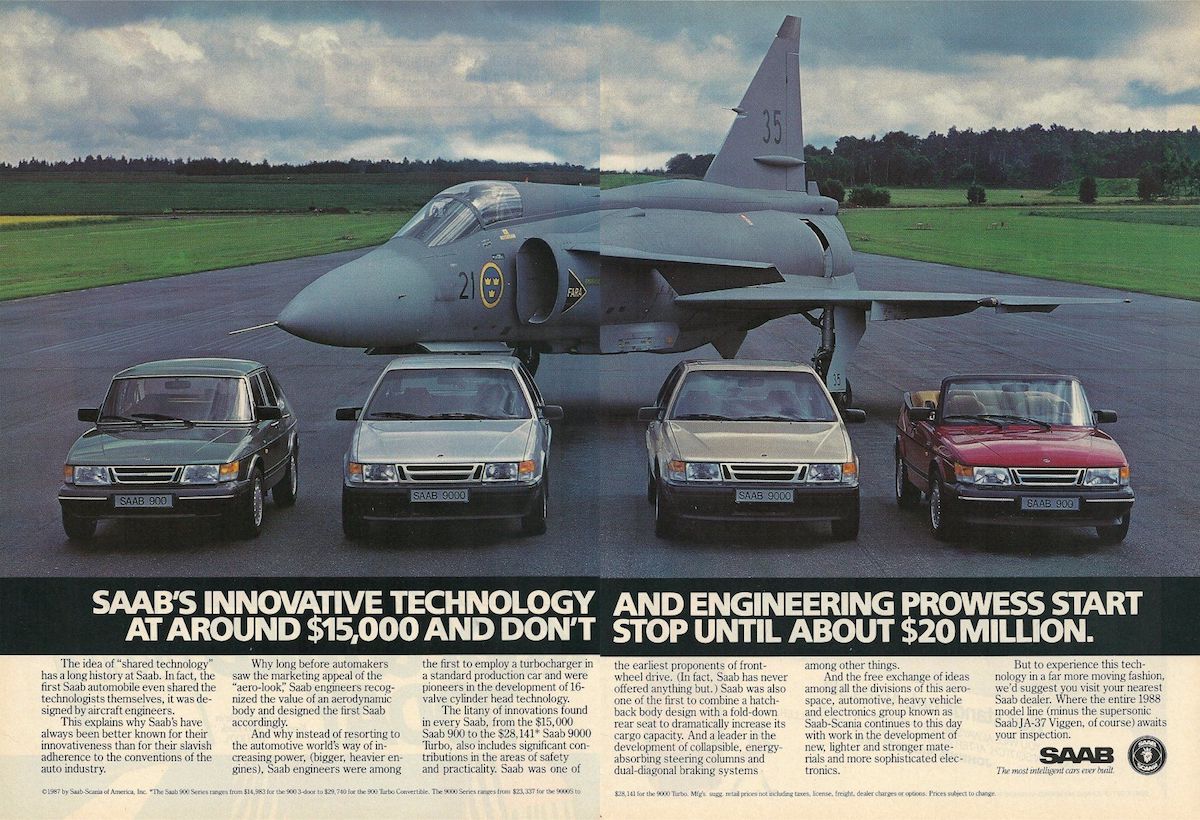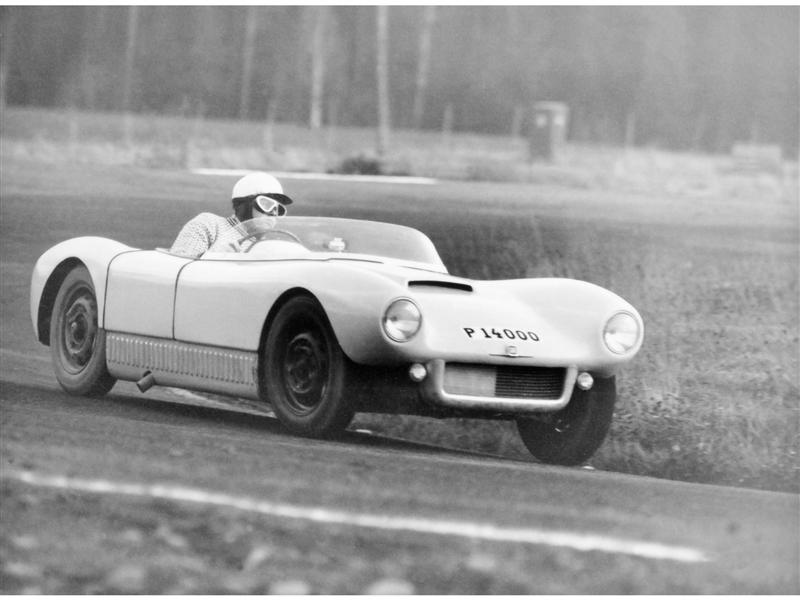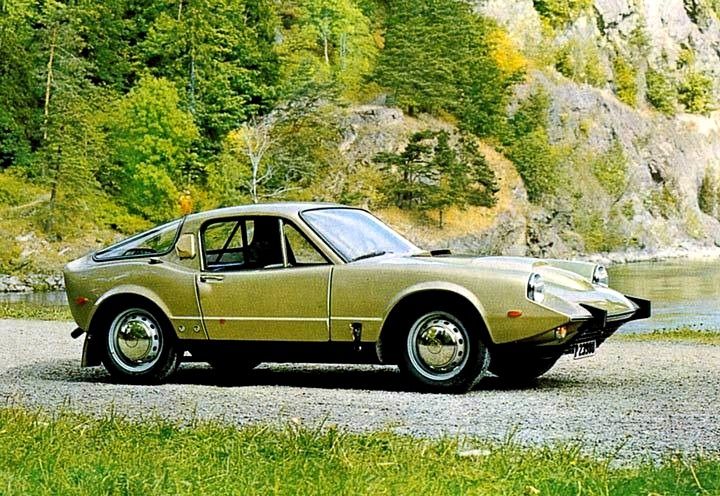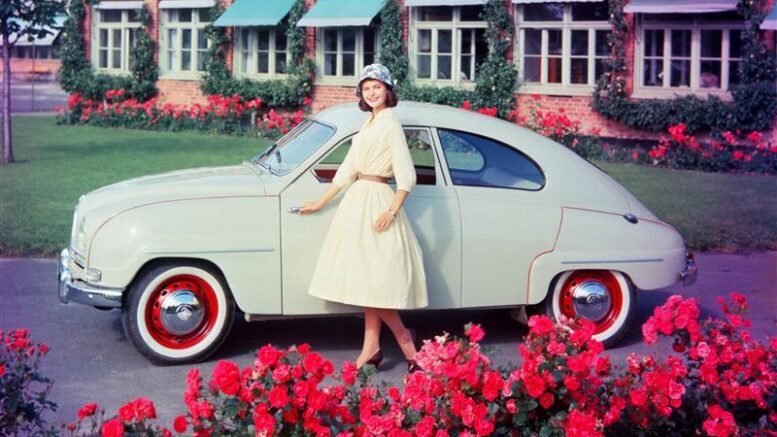Q: Greg I’ve enjoyed your car nostalgia work for many years, and especially if you mention the Saabs and how different they were. Do you remember those great Saabs of the late Fifties that sounded like bumble bees? They were called the Model 93 and came from Sweden. They also featured something novel to the car industry, a lifetime engine warranty. James G., Hartford, Conn.
A: James I sure do as I, too, was a big Saab fan. I especially recall those many “bumble bee” sounding 1956-1959 Saab models with that “4 on the tree” coupled to a 3-cylinder, two-stroke engine.
Founded back in 1949 by the Swedish company Svenska Aeroplan Aktiebolaget, a respected Swedish Aircraft Company, Saab corporate felt it could impact the car industry around the world, and in several ways did.
Saab is perhaps best known by car collectors for its very unique “humpback” sedans and coupes that roamed the roadways in the Fifties. However, here in the states it took until 1956 before Saabs started appearing on our nation’s highways. In a release provided by Saab, they noted that in late 1955, Saab’s chairman, Tryggve Holm, came to the U.S. to meet with Saab’s USA aircraft parts-buying agent Ralph Millet, an ex-pilot, aeronautical engineer, and graduate of Massachusetts Institute of Technology. Millet’s company, Independent Aeronautical, was based in New York and already had good communications with Svenska Aeroplan Aktiebolaget, a.k.a. Saab.

Saab has many times featured its airplane building expertise in its automobile ads. This ad is from 1987 featuring the Saab lineup of cars and a huge Saab jet as the backdrop. (Saab)
Between the business discussions, Holm asked Millet his opinion of importing the new Saab 93 model. Millet was pessimistic about the idea and skeptical of American consumers’ acceptance of a two-stroke-powered car as it was necessary to mix oil into the gas tank (like a motorcycle or lawn mower). Further Millet confessed that, frankly, he knew nothing about the car business.
However, two days later, as Millet was driving Holm to the airport, Holm insisted on sending a few cars to be shown at the next major auto show, and then see how the public would react. Without delay, five Saab cars were shipped, and Millet dutifully booked an exhibit space at the 1956 New York Auto Show where three cars were displayed, including two Saab 93 models and a Sonett Super Sport.
Saab’s first major model update of the original 2-cylinder model 92 was the 1956.

A sports car that attracted much attention was the 1955 to 1957 Saab Sonett, another example of Saab’s ability in performance and styling. (Saab)
Saab 93, equipped with a 33-hp, 3-cylinder, two-stroke engine and a four speed on the column. A partially cut-away model – revealing the unusual engine, front-wheel-drive and hearty steel construction – was exhibited along with a fully assembled road-ready “93” model car. As for the Sonett Super Sport Saab, it was a limited-production roadster originally intended for competition and only six examples were built back then. As an original Saab “concept car,” the Sonett Super Sport became a sensation on the auto show circuit, and the enthusiasts in NYC loved it and wanted to know more.
By the end of the New York car show, Millet was in the car business with Saab.
In 1957, the first full year of U.S. sales, 1,410 Saab 93s were sold, approximately 14-percent of total output. By the end of 1959, some 12,000 Saab 93s had been shipped to the U.S., making the U.S. market Saab’s biggest export market.
The two-stroke engine was well suited for winter operation, and owners reveled in the fact that it always seemed to start, even on very cold days. Salespeople would promote the fact that there were only seven major moving parts to this simple engine: the crankshaft, three pistons, and three connecting rods.
However, and leading up to you lifetime engine warranty question, the little engine was not without flaws, one of them lubrication problems due to long stretches of consistent-speed highway driving. Even worse was incorrect fuel-oil mixture, which led to engine seizure. This catastrophic situation required the motor to be completely rebuilt or replaced. Rather than ship the broken engines back to the factory in Sweden, Millet set up an engine-rebuilding workshop at a Connecticut warehouse facility to quicken the rebuild process.
“We had an assembly line – two or three people – working to rebuild engines,” recalled Len Lonnegren, Saab’s public relations chief from 1963 until 1989. “Regardless of the problem, it was often best to simply replace the engine – a relatively quick and easy process in an early Saab. We kept many customers quite happy and loyal by doing this without charge, as Ralph Millet had initiated a lifetime engine warranty to boost confidence in the two-stroke motor.”
Thus, the first “lifetime” warranty came from Saab and the Model 93. A station wagon, the Saab 95, was introduced in 1959, followed by the 1960 Saab 96 two-door, both of which featured the lifetime engine warranty.
Unfortunately, the future of Saab found nothing but trouble. From its first production model, the Saab 92 in 1949, the Swedish manufacturer merged in 1968 with Scania-Vabis with promising results. In 1978 the Saab 900 launched to big popularity, especially with college students and became Saab’s best-selling model. Next up was the new Saab 9000, a popular midsize sold in the mid-1980s.
 Then in 1989, the automobile division of Saab-Scania was restructured into an independent company, and problems started. General Motors (GM) bought a 50-percent ownership, of which at the time many felt would be a savior and allow major Saab model restructuring. In the beginning, all was well with two well-known models appeared during this period, including the Saab 9-3 and the Saab 9-5.
Then in 1989, the automobile division of Saab-Scania was restructured into an independent company, and problems started. General Motors (GM) bought a 50-percent ownership, of which at the time many felt would be a savior and allow major Saab model restructuring. In the beginning, all was well with two well-known models appeared during this period, including the Saab 9-3 and the Saab 9-5.
Then in 2000, GM exercised its option to acquire the remaining 50%, which it did, and immediately sold Saab to the Dutch automobile manufacturer Spyker Cars NV, known for hand built exclusive sports cars. Spyker quickly ran out of money and couldn’t pay their bills in early 2011. In March of 2011, Spyker production was halted and GM, which still supplied engines and transmissions to Spyker, did not approve a co-op with a Chinese company to help. By December, Spyker was bankrupt and Saab was eventually sold in June 2012 to a Chinese-Swedish investment group called National Electric Vehicle Sweden. (NEVS).
To summarize, in 2014 NEVS filed for bankruptcy and by 2016 that was basically the end of the Saab motorcar story. Spyker, meanwhile, tried to stay in the game by re-entering the car manufacturing business in 2015, but again filed for bankruptcy in 2021.
I want to thank Saab for helping with much of this information, and thank you, James, for the question and recalling the lifetime two-stroke engine warranty.
(Greg Zyla is a syndicated auto columnist who welcomes reader questions on collector cars, auto nostalgia and motorsports at greg@gregzyla.com.)



Be the first to comment on "Collector Car Corner / Cars We Remember; The 1956-1959 Saab, and more Saab history"